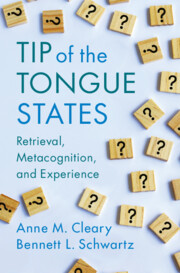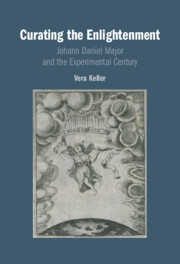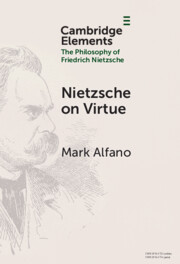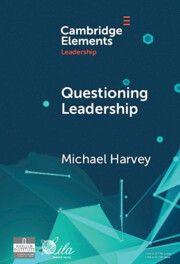Refine search
Actions for selected content:
53 results
8 - The Winding Path
- from Part II - Discovery
-
- Book:
- The Artist's Life
- Published online:
- 04 November 2025
- Print publication:
- 20 November 2025, pp 49-58
-
- Chapter
- Export citation
Curiosity and Mental Search
-
- Journal:
- Episteme , First View
- Published online by Cambridge University Press:
- 07 November 2025, pp. 1-18
-
- Article
-
- You have access
- Open access
- HTML
- Export citation
Evidence for partially chloritized smectite in Gale crater, Mars
-
- Journal:
- Clays and Clay Minerals / Volume 73 / 2025
- Published online by Cambridge University Press:
- 15 July 2025, e17
-
- Article
-
- You have access
- Open access
- HTML
- Export citation
Chapter 5 - On Curiosity as Epistemic Vice
-
-
- Book:
- Heidegger's <i>Being and Time</i>
- Published online:
- 28 June 2025
- Print publication:
- 26 June 2025, pp 84-102
-
- Chapter
- Export citation
Chapter 5 - Phenomenology
-
- Book:
- Tip of the Tongue States
- Published online:
- 26 May 2025
- Print publication:
- 12 June 2025, pp 91-109
-
- Chapter
- Export citation

Tip of the Tongue States
- Retrieval, Metacognition, and Experience
-
- Published online:
- 26 May 2025
- Print publication:
- 12 June 2025
Chapter 1 - On the Question of Discovery
-
-
- Book:
- On Discovery
- Published online:
- 05 May 2025
- Print publication:
- 22 May 2025, pp 1-19
-
- Chapter
- Export citation
Chapter 3 - Affect-Caused Action
-
- Book:
- Explaining our Actions
- Published online:
- 17 April 2025
- Print publication:
- 08 May 2025, pp 46-69
-
- Chapter
- Export citation

Curating the Enlightenment
- Johann Daniel Major and the Experimental Century
-
- Published online:
- 07 December 2024
- Print publication:
- 07 November 2024

Nietzsche on Virtue
-
- Published online:
- 04 December 2024
- Print publication:
- 02 January 2025
-
- Element
- Export citation
Chapter 2 - excucurristi a Neapoli
-
-
- Book:
- The Augustan Space
- Published online:
- 14 June 2024
- Print publication:
- 27 June 2024, pp 41-52
-
- Chapter
- Export citation

Questioning Leadership
-
- Published online:
- 17 June 2024
- Print publication:
- 20 June 2024
-
- Element
- Export citation
Chapter 6 - The Role of Curiosity1 and Curiosity2 in the Emergence of Insight
- from III - Pathways to Insight
-
-
- Book:
- The Emergence of Insight
- Published online:
- 02 May 2024
- Print publication:
- 09 May 2024, pp 115-139
-
- Chapter
- Export citation
Chapter 9 - Can We Get Better at Being Alone?
-
- Book:
- Solitude
- Published online:
- 24 March 2024
- Print publication:
- 18 April 2024, pp 178-201
-
- Chapter
- Export citation
Chapter 1 - The place of science in the early years
- from Part 1 - What initial information should I know to teach science?
-
-
- Book:
- Science in Early Childhood
- Published online:
- 13 December 2023
- Print publication:
- 10 January 2024, pp 8-16
-
- Chapter
- Export citation
Chapter 2 - On the Emergence of Pleasurable Thinking
-
- Book:
- The Pleasure of Thinking
- Published online:
- 05 October 2023
- Print publication:
- 19 October 2023, pp 40-93
-
- Chapter
- Export citation
Chapter 5 - Thinking through the Psyche
-
- Book:
- The Pleasure of Thinking
- Published online:
- 05 October 2023
- Print publication:
- 19 October 2023, pp 147-163
-
- Chapter
- Export citation
4 - Il bacio mordace: Of Kissing and Biting
-
- Book:
- Monteverdi and the Marvellous
- Published online:
- 10 October 2023
- Print publication:
- 28 September 2023, pp 134-163
-
- Chapter
- Export citation
CURIOSITAS AND PSYCHE'S GROWTH IN APULEIUS' METAMORPHOSES
-
- Journal:
- Greece & Rome / Volume 70 / Issue 2 / October 2023
- Published online by Cambridge University Press:
- 12 September 2023, pp. 197-217
- Print publication:
- October 2023
-
- Article
-
- You have access
- Open access
- HTML
- Export citation
9 - Challenge Your Mind
-
- Book:
- Resilience
- Published online:
- 01 August 2023
- Print publication:
- 07 September 2023, pp 159-172
-
- Chapter
- Export citation
